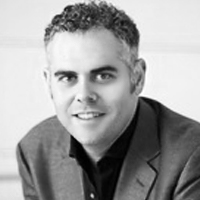Question
I find myself introducing wireless accessories to my patients during follow-up appointments to help with specific problems. Sometimes this works, but often backfires. What strategies are there to introduce wireless technology earlier in the fitting process?
Answer
The scenario you describe happens all too frequently. This method for the introduction/delivery of accessories has the potential to sway the fitting in either direction. If the solution works and is agreeable to the user, then fantastic. However, I have seen firsthand and heard plenty of stories of disgruntled users who only see higher prices and increased complexity from accessories after they have paid top dollar for the hearing aids themselves. When this happens, users won’t fully experience the value a hearing system could deliver.
Before we begin describing strategies to address this, let’s first look at the problem. We all are creatures of habit, and new technology is, well, NEW! Considering that, how can we train ourselves and encourage hearing aid wearers to focus more broadly on the idea of a hearing system instead of a hearing aid + accessories? Here are some suggestions for moving the system mentality closer to the forefront of your clinical practice.
Marketing Materials/Office Décor
My first recommendation is to move the messaging right up to the very beginning of the interaction with clients. Incorporate the benefits of wireless technology into your marketing materials through advertisements, website designs and any communications you may have with any new clients. It a small and subtle touch, but every little bit can help. Additionally, an interactive display case in the waiting room can engage and prime prospective patients before the actual consultation. This is a more productive use of the client’s time than thumbing through old issues of People Magazine.
Augment Your Intake Forms
Adding questions to your intake forms can also be useful to prime the client for the next part of the journey toward better hearing. The obvious question is “which questions should be added?” Which questions is largely a matter of style and is associated with what information you want to capture, how you want to capture the information, and what you plan to do with the information once you have it. Within the hearing industry, it is common to inquire about problems when listening to the TV in a “yes, no” question format. A different way of approaching this question is to consider a checklist of recreational listening needs and include things like TV, phone calls, cell phone or tablet media, computer media, and video gaming among other items. Likewise, follow-up questions can be used to build on this concept in such a way that helps you uncover the person’s comfort with technology without asking “do you consider yourself tech savvy?” For example, you might ask “Which of the following forms of communication do you use?” and the possible responses could be phone, text, email or video calls. This type of question could provide some insight into how comfortable they are with technology. A few simple questions like this can begin to raise awareness and help in starting the conversation on how connectivity can be an integral part of the hearing aid system.
Use Demonstration to Illustrate the Concept
Describing the use of a remote microphone accessory probably takes longer than it does to demonstrate. Any opportunity to show instead of tell has the potential to reduce counseling time during the fitting and increase the impact of the benefits the accessory can offer.
Use Contextual Training to Make the Use Relevant
We learn and retain more depending on how actively engaged we are across different modalities. It is typical to give end users detailed instructions guiding them through basic operation and troubleshooting. Unfortunately, these instructions can be abstract and difficult to retain when presented out of context. Try using the fitting session as a rehearsal for daily activities and provide a context for usage. For example, a fitting professional views high frequency amplification as potentially improving speech clarity. Moreover, they may describe it in this fashion to their patients. New hearing aid users may initially perceive high frequency amplification as harsh, strident and unpleasant to listen to for an extended time. As such, they may not understand the benefit that may come from high frequency amplification. Treble/Bass controls within an app have the potential to balance this across situations. Using the context of “if you find yourself straining to understand” or “imagine you are in a situation where it is paramount that you hear and understand every word…” can create a stronger mental framework then simply saying: “you have a treble control that you can turn up and down.” By placing the user in a real life context and providing the user with the opportunity to experiment, you engage the user on a deeper level.
There are undoubtedly many different methods to help new and even experienced users to get the most from their hearing systems. I hope these ideas will plant some seeds to help clinicians pull some of the latest and greatest technology into the fitting process at an earlier stage, to keep the cutting-edge industry standards at the front of the hearing aid fitting practices.
For a review of current wireless technologies and their benefits, as well as a look into the future of wireless technology, please view the ReSound CEU webinar, Wireless Technology: Where Have We Been? Where Are We Now? Where Are We Going?

